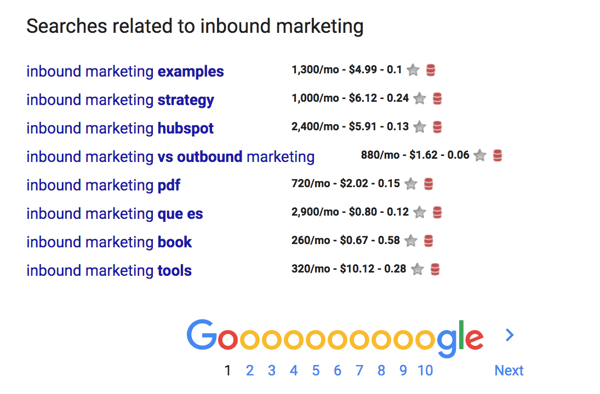It's never been easier to blog, but getting consistent traffic is another story.
Despite following an editorial calendar and producing quality blog posts, you can start to see dips in traffic. Sometimes, you stop getting traffic entirely. When this happens, you panic and look for ways to turn around performance, fast.
Before resorting to quick-fixes, like spammy link building or keyword stuffing, there are a few tried and true blog traffic methods that can get you back on the right track. In this post, I'll review the methods we use at Lean Labs to attract and hold on to blog visitors.
How To Get Traffic To Your Blog
When blog traffic abruptly begins to decline, it's scary. All of your articles seem to be going to waste. However, there's a silver lining. Losing visitors can also be a good thing. If your blog stops generating traffic, it means something is wrong. Your message is off, you're using the wrong keywords, or you're not writing with enough specificity.
Regardless of the reason, you now have an opportunity to resolve any issues before losing any more visitors, or investing more in a strategy that's not driving performance. Here's how you can realign your blog strategy and start to bring in traffic again.
Reconsider Your Keyword Strategy
Your keyword strategy is essential to your blog strategy. Every blog post needs to target a keyword that will hopefully rank in Google's top five. Otherwise, you're writing a post and sending it off into the ether with no way for Google or any other search engine to understand the subject matter.
Alternatively, if you are actively selecting keywords to rank for, and still not getting results, it's possible you're too ambitious. Despite which reason it is, you've got to go back to your keyword strategy and approach things a little differently.
I organize and plan out blog posts using a Google Spreadsheet. Using SEMRush, Moz, Google Keyword Planner, Answer The Public, and honestly, just Google Search's related searches, I search for the topics I want to write about, such as business growth, lead generation, or inbound marketing. The related searches that come up in Google are one of the most useful tactics I've found.
Here's an example of what comes up when I Google "inbound marketing":

You may notice the stats next to each related search. The stats aren't a feature Google has, but a Google Chrome plug-in called Keywords Everywhere. The plug-in pulls the stats right from Google Keywords (it's the same data), and the stats populate in Google Search, as well as Amazon, Etsy, and more. Wherever you go, you can see how many people are searching for the term without having to leave the page.
When I have a few ideas for keywords, I check to see how difficult it will be to rank for them. In SEMRush and Moz, you have access to data that reports keyword difficulty, which ranges from 1-100. Typically, any score between a 30-60 is a decent opportunity, and a chance to generate traffic from some low-hanging fruit.
Be Brutally Honest About Headlines
The headline of your blog post is the first impression you'll make on a reader. They'll read that headline, and decide whether or not they want to click. If you go back and review your blog titles, ask yourself:
- Do your headlines stand out?
- Are they too similar to other articles?
- Does the headline tell the reader what to expect from the blog post?
- Would I click on this?
If the headline isn't good enough to click on, you could be losing traffic based on that alone. HubSpot has a fantastic guide to writing better headlines that takes a formulaic, proven approach.
Don't Skip Over SEO
SEO may seem like an easy one, but the number of people who skip over blog optimization might surprise you. They don't think it's as important as the actual writing and doubt how useful it is. Search Engine Journal even wrote an article about why you may not need it.
Despite the naysayers, I'm in the camp of yeah; you need optimization for your blog. Otherwise, how is anyone going to uncover your articles? And when I say optimization, I mean a thorough, strategic approach to ensure that Google and any potential customers can locate your post.
There are a few must-haves for every blog post you write, including:
- A title tag with your keyword within the first 60 characters
- An H2 tag (first headline) after your introductory paragraph with your keyword
- A URL that includes your keyword
- A meta description with your keyword
- Alt text for your images that uses your keyword
Yoast SEO has a great piece about every single way to optimize a blog post if you want additional context on the subject.
Increase The Frequency
How often you should publish posts is a loaded question. It depends on a lot, such as your bandwidth and how much you can afford to release a week. However, if you're only posting 1-2 okay blog posts a week, you're wasting your effort.
To get more blog traffic, you need to either increase your blog frequency with shorter, but more valuable posts or invest more time and energy into making those 1-2 blog posts exceptional. For those who decide to increase the rate, somewhere around 3-4 posts a week will work.
Share Everywhere
There's a common saying in marketing that 20% of content creation is production, and the other 80% is promoting. When we're talking about frequency, and how often you should blog, you also want to think about how you're distributing those posts. If you need to increase traffic, you can't publish articles and wait for visits to come. Your blog isn't the baseball diamond from Field of Dreams.

You need to get your material out there, or it will get lost in the clutter of all the other blog posts covering that topic. You can link relevant blog posts into nurturing workflows, regularly on social channels, or in other blog posts across your website. You can even boost or promote posts on Facebook or Twitter. Boldly share your articles across your channels, and have your employees share posts as well.
Also, don't hesitate to share links more than once. No rule says you can't re-promote blog posts. In fact, Guy Kawasaki quadruples clicks by tweeting the same content up to four different times.
Get Granular
If you're posting frequently and sharing your stuff everywhere, and still not getting traffic, you may have been writing about the wrong topics. For example, blog posts that cover broader topics have difficulty bringing in traffic because there is too much material about that subject already. Often, websites with a better domain authority with Google own these topics, making it very challenging for anyone else to rank for them.
If I wrote a blog post about inbound marketing in general, for example, I'd have a tough time breaking out in my space against HubSpot, Marketo, and Pardot. Instead of going head to head with them and fighting a losing battle, I shift my focus to more specific and detailed posts.
This way, I focus on more specific facets of inbound marketing. I can answer a commonly asked question or explain how to approach a particular marketing initiative. I still provide a lot of value for my ideal reader, and I'm going after a rarer subject.
Write For One Reader
Another issue about broader topics is the reader you attract. You invest a lot in blogging, so I understand you want to get the most from it, but writing about general things in the hope of attracting more readers is not an effective strategy. Let's go back to the quality over quantity example.
If I wrote about inbound marketing because the topic covers a lot of ground, I'm not attracting my best customer. I want a customer that's trying to figure out inbound marketing and has specific questions or concerns. That's where I can provide the most value.
I don't want to attract other agencies looking for information about inbound marketing. I don't want a student researching it. As a result, I need to get specific and write a post with one of my buyer personas in mind.
John Lee Dumas of Entrepreneurs On Fire has a great argument about why you should write for only one persona, and why you should craft personas with as much detail as possible.
(He calls them avatars, but it's the same idea.)
We also use a few strategy documents to outline our personas, which you can download for free (no phone call or follow-up) right here in our SprocketRocket Strategy Kit.
Conduct Better Research
When you're writing blog posts, you're competing with every other company in your industry. They're also churning out blog material, and trying to go after the same readers you are. You want to write better posts, of course, but if you're essentially rewriting their articles and covering the same ideas, you're only pushing out more stale content into an oversaturated market.
You're not contributing anything unique, or demonstrating your differences. You want to write articles that show your customer that your approach is unique and life-changing. You want to dazzle them, which you won't do if you're doing the same thing everyone else does. You can accomplish this by providing better research, better statistics, and actual stories about your success.
Another reason to provide more subject matter expertise and curated research is to make a connection with your customer. With better information about your customer, you won't operate off assumptions and only write about the topics they consider valuable. To generate some ideas, visit a few forums such as Quora or Reddit to see candid conversations happening within your audience.
Getting Traffic From Posts You Have
The last tactic I'll cover is repurposing what you already have. If you have a large volume of material built up, you can take a lot of it and repurpose it into something new and exciting. You can do this using a few different methods, including:
- Historical Blog Optimization
- Optimizing Old Posts
- Adding New Images and Videos in Older Posts
- Turning Blog Articles Into Slideshares
- Share Older Blog Posts Again
There's a lot of ways to recycle your assets. With the amount of time you've already spent on that content, you may as well get more ROI from it. When I'm repurposing an asset, I go right for our Repurposing Toolkit: Why & How to Repurpose Content eBook. The eBook shares step by step tactics for generating more traffic towards the blog material you already have.